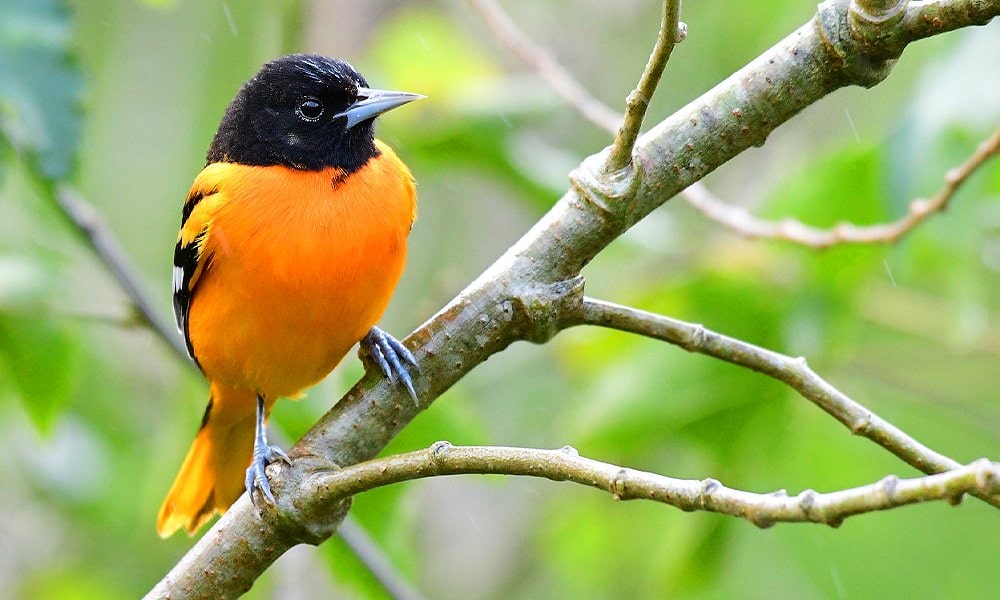Getting their name from the Latin aureolus, meaning golden, orioles are widely beloved backyard birds known for their bright orange plumage. If you’re interested in bringing orioles into your backyard, one of the first things you need to understand is that attracting these brightly colored birds is that it’s all about timing. Your best chance of attracting them is when they first arrive in the early spring.
Cold, tired and hungry from migration, and faced with the arduous task of building their nest, orioles need all the help they can get as they pass through their migration route and arrive at their spring breeding grounds. If you get the timing right, orioles will gladly eat from your feeders and fill your garden with vibrant orange beauty.
For the best chance to see these beautiful songbirds, start early and follow these tips to creating an oriole-friendly yard.
1. Use oriole-friendly feeders
Although it is not unusual for orioles to try and use hummingbird feeders (these cheeky birds are fond of the same sugary nectar that goes into hummingbird feeders), they’re usually too large to fit into the small openings provided by hummingbird feeders.
They may even knock down your feeders by trying to perch on something that wasn’t designed with larger songbirds in mind. Use oriole-specific feeders and make sure your feeder has large enough perches and drinking ports to accommodate orioles.
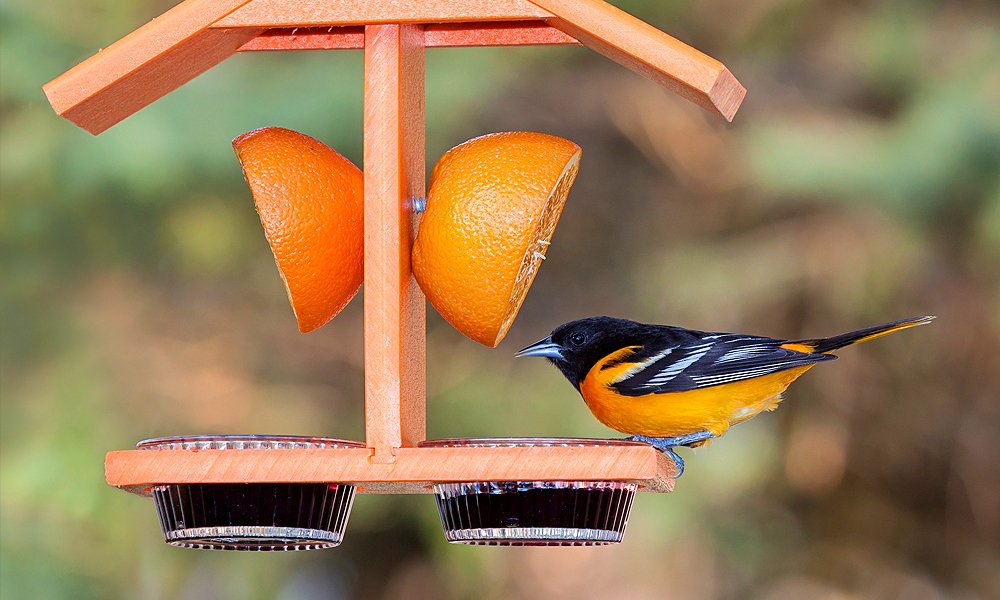
Since they are greatly attracted to vibrant colors, especially orange, oriole feeders usually come in bright yellow and orange hues.
Orioles need large perches and drinking ports big enough for their larger bills. For best results, choose a brightly-colored oriole feeder that will support their weight. As a bonus, oriole-specific feeders often include additional features such as places to put ripe fruit or other treats for your birds.
2. Add a moving water source
just like humans, birds need water to avoid dehydration and fuel all the hard work that goes into migration. Orioles are no exception. Oftentimes, backyard birders find that water sources are an even bigger draw for shy songbirds than birdfeeders.
Orioles are especially attracted to shallow dishes and moving water. Strategically place bird baths near feeders to entice birds to use this convenient water source.
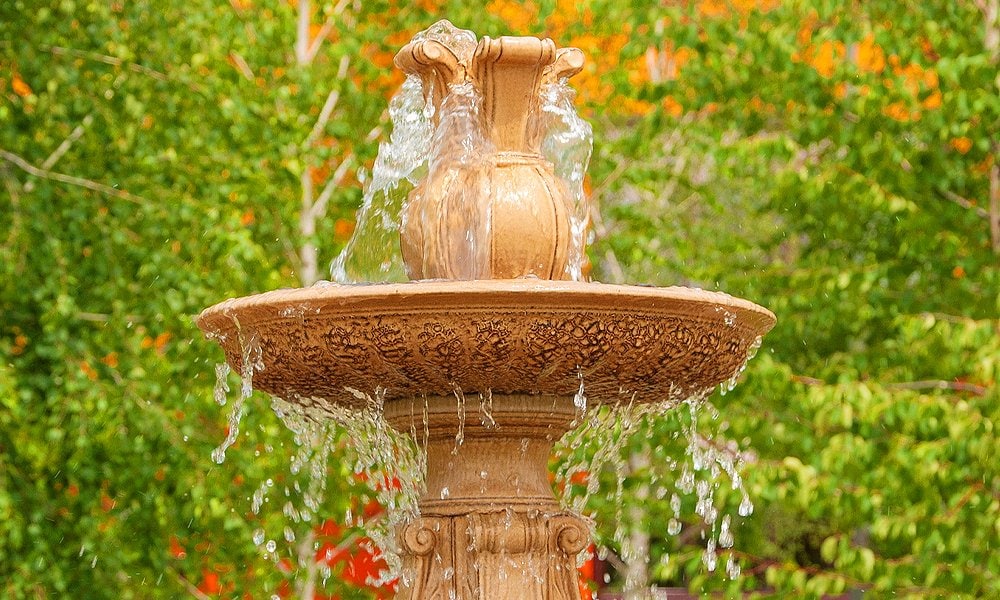
Orioles love the sight and sound of moving water, so if your bath has a bubbler, mister, or dripper, even better. Be careful to use basins no more than 2 to 3 inches deep to give them an optimal place to drink and bathe. Just like feeders, water sources should be kept clean and clear of debris for the health of your birds.
3. Switch to mealworms in summer
Jelly and fruit give orioles an energy boost needed for migration during the spring and fall months, but orioles often switch their diet to more protein-rich foods during the summer months. During this time, their diet shifts to focus on insects that provide them the additional protein needed for breeding and raising their young.
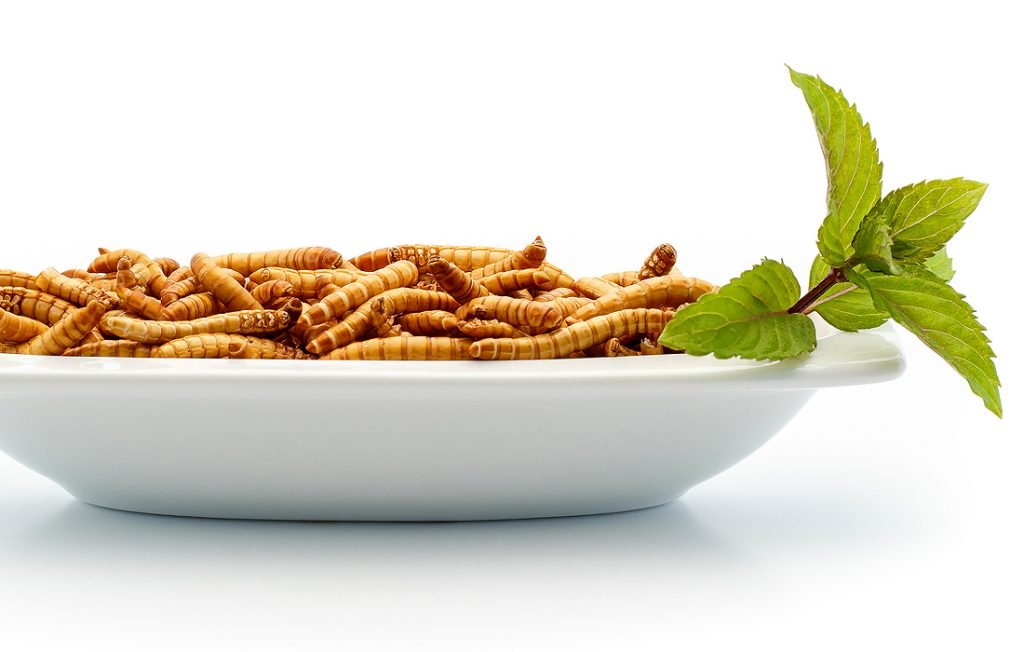
Once nesting season begins, provide your birds more nutritional value by sprinkling mealworms on top of orange slices. Once they stop coming for the fruit, keep your orioles coming all summer long by offering dried mealworm in a separate cup or tray.
Orioles may also visit suet feeders, especially if suet is offered in small chunks they can easily nibble, but keep in mind suet may not work in your climate during hotter temperatures.
4. Right feeder location is the key
Orioles are treetop birds, so keep this in mind when hanging feeders. Think like a bird and place feeders out in the open so they can be seen while birds fly overhead or sit high atop their perches.
On the other hand, a birdfeeder that is too exposed may make birds feel too vulnerable to stop and eat. Finding the right blend of tree cover and visibility is a must.
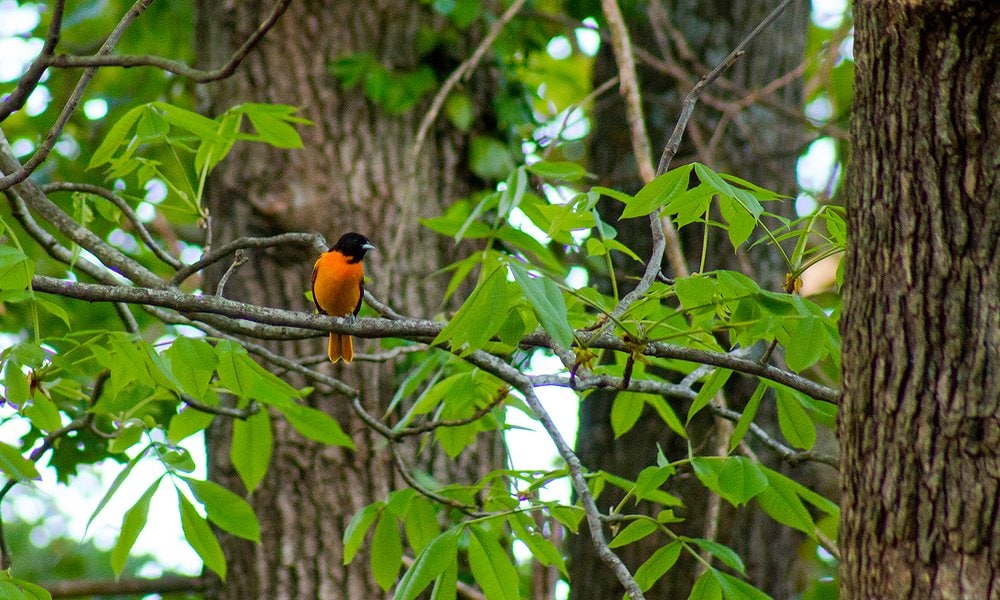
These shy birds may not venture close to busy areas until they are used to the setting, so keeping feeders separated from human activity and other feeding areas will help the birds feel more secure and allow them to feed in peace.
And lastly, be patient – it can take several seasons to not only attract orioles but have them return year after year.
5. Add an orange ribbon to your backyard
Orioles are birds that appreciate a bit of color. Similar to hummingbirds, orioles have an attraction to bright and flashy colors. Feeders are often orange to make use of this fact. While hummingbirds prefer red, orioles are attracted most to vibrant orange colors.
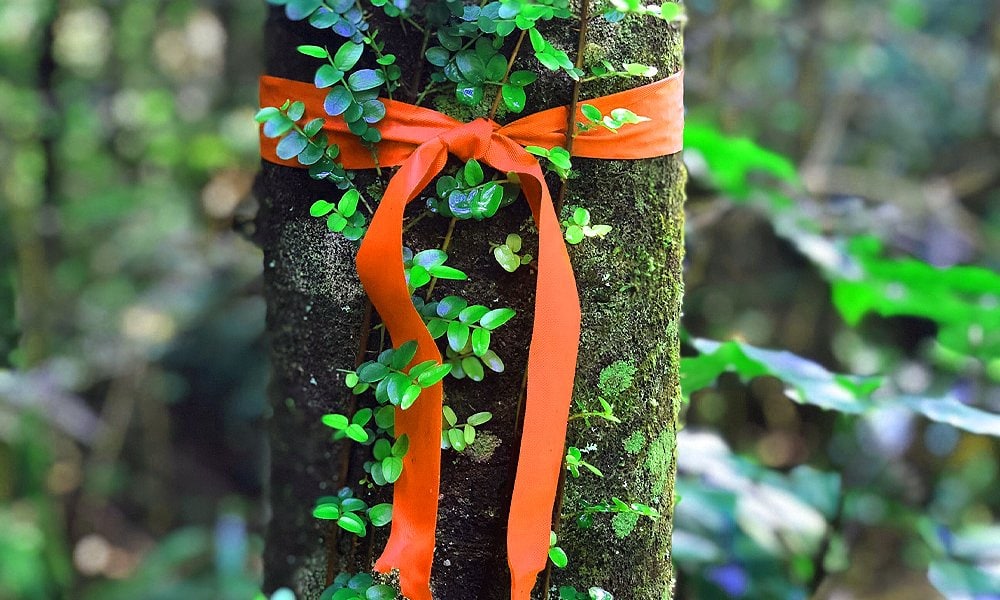
Brighten up your landscape to catch the eye of any orioles passing overhead. Tie orange ribbons, strips of cloth, or surveyors tape around trees, bushes, railings, or high in branches to attract their attention. These tree-dwelling birds prefer high canopies and these flashes of color may entice them to take a closer look at your yard and feeding stations.
6. Offer homemade nectar
While they may not have the metabolism of a hummingbird, orioles also enjoy drinking sugar water or nectar for an instant energy boost. Suitable nectars can be purchased, but making a nectar solution is simple, and you can use the same recipe for both hummingbirds and orioles. Keep your feather friends safe with this simple mixture of four parts hot water to one part sugar.
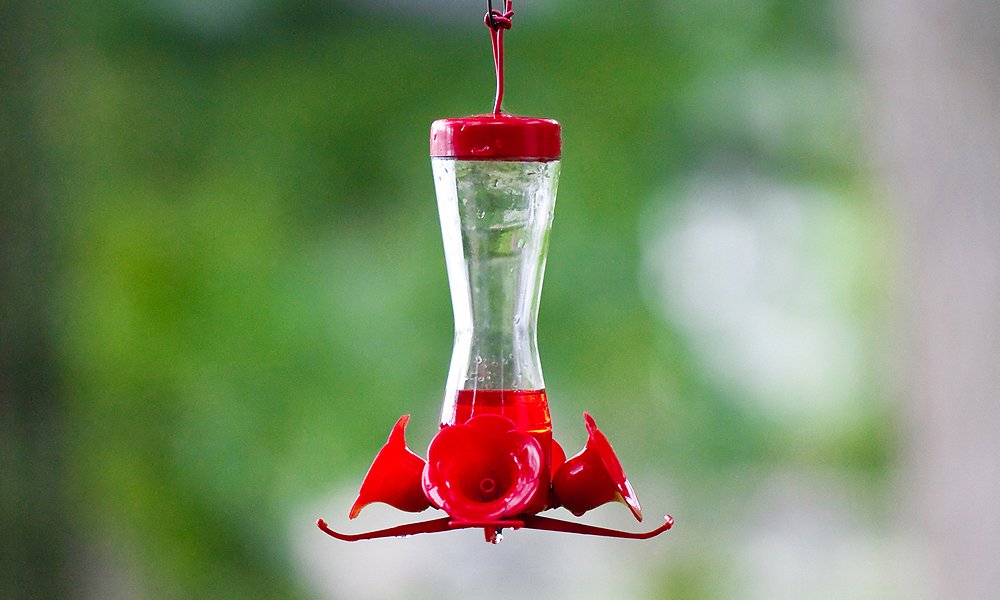
Stir the mixture until the sugar is completely dissolved and cool to room temperature. That’s it. Nothing extra, like added sweeteners or honey, is needed. This blend is often healthier than the store-bought nectars on the market, which may contain potentially harmful dyes.
Hot water is typically enough to dissolve the sugar, but boiled water is best and helps the mixture last longer (up to a week) when stored in your fridge. Remember to keep your nectar fresh and never use food coloring.
7. The secret is to start attracting orioles early
We already mentioned this above, but when it comes to attracting orioles to your yard, timing is everything. Cold, tired, and hungry from migrating at night, orioles will look for a reliable food source and stick to it.
The secret is to put feeders out at least a week or two ahead of their anticipated spring migration. If the birds don’t spot the feeders as soon as they arrive, they’re unlikely to start using them later.
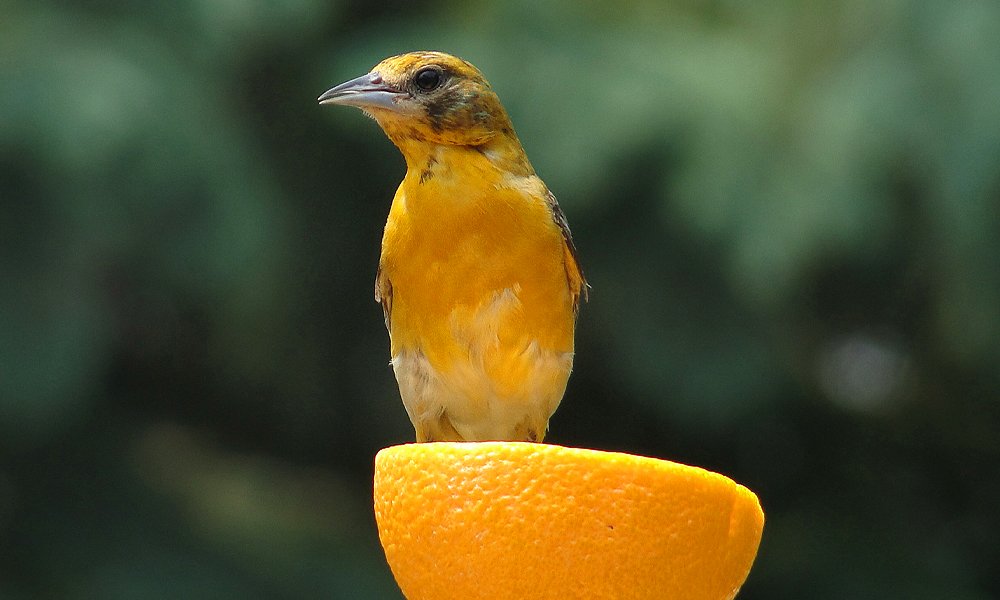
Orioles being arriving as early as April in the southern states and continue until May further north. Start putting feeders out in late March or early April to attract the first arrivals, and keep them out late into the fall as birds migrate down south again. Maximize your opportunity to see these birds by making your yard a reliable source for them year after year.
8. Tempt with grape jelly and fruit
Migration takes a lot of energy, so tempt your birds with an energizing food source like grape jelly. Unlike many other fruit-eating birds, orioles seem to prefer only ripe, dark-colored fruit, and you can attract them by offering small amounts of this dark jelly at your feeding stations.
Orioles also love munching on fruit. Fruits with bright eye-catching colors are your best bet for attracting them. Orange slices, crushed grapes, berries, and peaches are all oriole favorites!
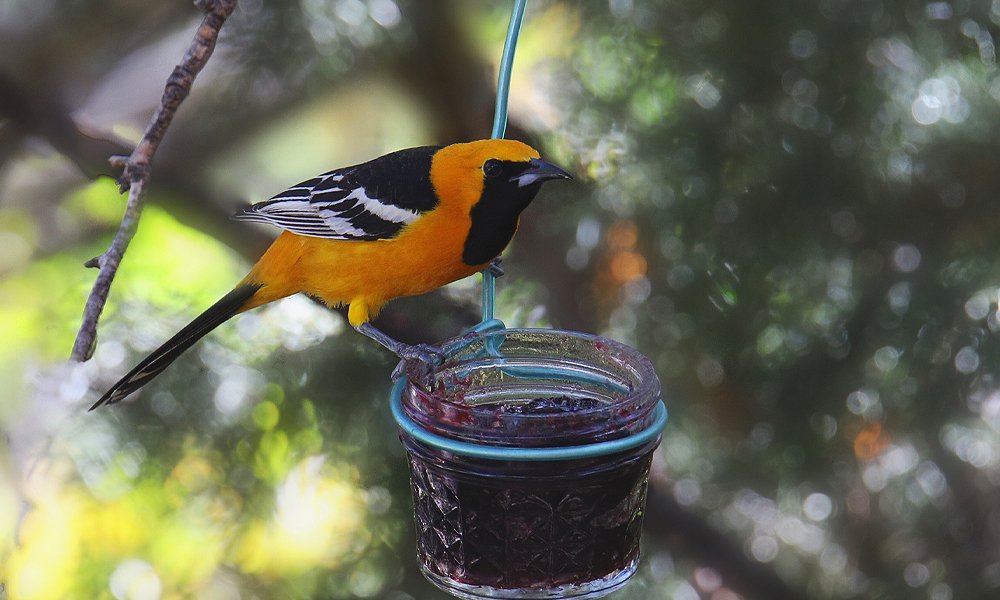
Jelly is best served in a cup or a shallow dish, but make sure to keep them clean. Like any sugary food, the jelly will be quick to mold or attract other unwanted visitors. You can use small tins or plastic lids, but be sure to fasten them to something, or the birds will knock it right to the ground. Make jelly last longer by combining one part jelly with one part water in a blender until it has the consistency of thick juice.
I want to make an important note here. In recent years, conservation groups have been warning against putting out jelly, especially later in spring when it gets warmer outside.
When the jelly melts in the sun, smaller birds that eat from it can become stuck in the coagulated goo that results. Jelly is also a very sugary snack that should be used sparingly with orioles under the best conditions. Jelly can help you attract orioles, but you absolutely must be conscientious about the temperature, hygiene, and volume of jelly that you provide. Follow any guidelines put out by local groups and do whatever possible to minimize potential harm.
If this all sounds overwhelming, then you may be better off sticking to fruit and mealworms. Orange slices are a reliable oriole favorite that’s usually pretty easy to come by.
Also read: 5 Best Oriole Feeders [Nectar, Jelly & Fruit]
9. Encourage nesting in your yard
Orioles look for tall deciduous trees to build their unique and remarkable nests. While orioles do not nest in bird houses, you can encourage them to build their nests in your yard if you have willow, elm, oak, poplar, cottonwood, or similar trees. Orioles prefer to use materials such as plant fibers, strips of bark, grasses, vines, and strings for their tightly woven hanging nests.
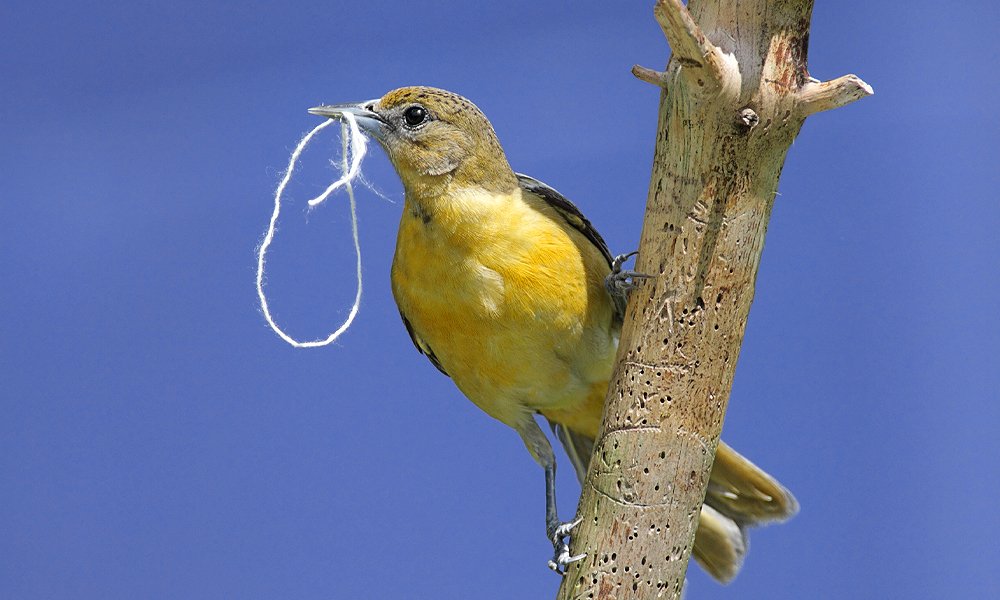
Traditional advice would tell you to offer slender fibers such as pet fur, hair, or yarn for the birds to weave into their sock-like hanging nests. More up-to-date knowledge tells us that birds can become tangled in materials laid out by humans. Instead of offering hair or yarn, plant a garden rich in fibrous native plants and grasses. From there, the orioles will know what to do!
Although nests are usually anchored quite high, orioles will re-use nesting material each year, so it is beneficial to leave old nests up for birds to salvage from next spring.
10. Plant the right flowers
Native plants and flowers offer the best nutrition to attract feathered friends to your backyard. While nectar feeders are great supplements, birds can’t resist the real deal. Fill your garden with nectar-producing flowers and vibrant orange hues for the best chance at bringing in orioles.
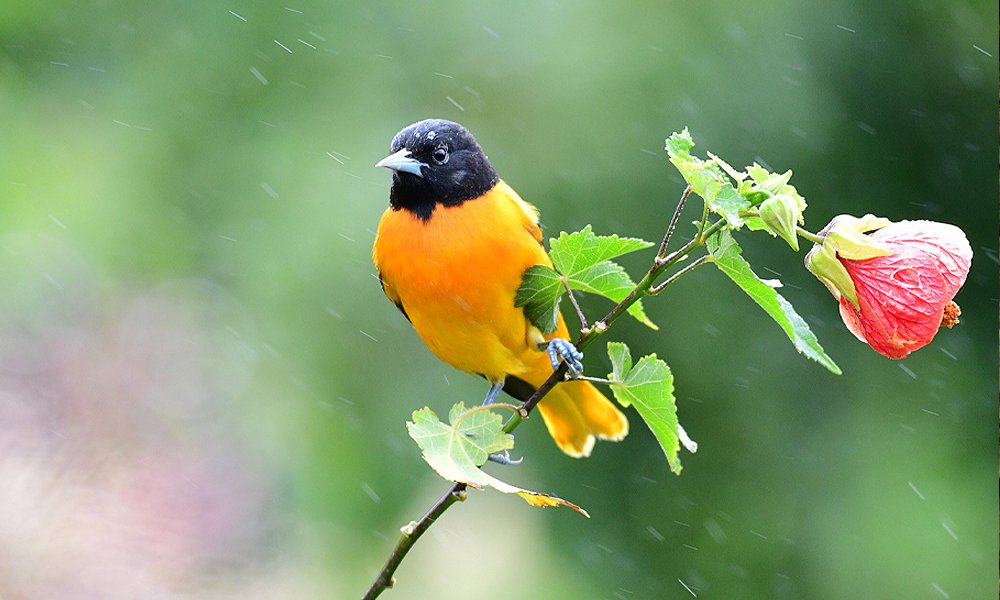
You can find lists online to find native plants that will grow in your area if you’re just getting started, but pollinator-approved favorites like milkweed and coneflower are a good place to start. In addition to the nectar, native plants also help offer a host of insects beneficial to the birds. Garden flags, gazing balls, a painted bench, or even a decorative trellis all offer additional options to add a boost of oriole-attracting color, but colorful flowers are a better option than any synthetic decoration.
Also read: 12 Best Solar Bird Bath Fountains & Pumps
11. Keep ants out of the feeder
As you can imagine, sweet treats for orioles often means creepy-crawly pests at your feeders too. Ants, bees, and other insects are especially attracted to the sweet nectar and fruit halves you may be set out for your feather friends. Straight jelly and orange halves have the highest sugar ratio, so it will draw the most bugs and should be changed regularly to avoid contamination.
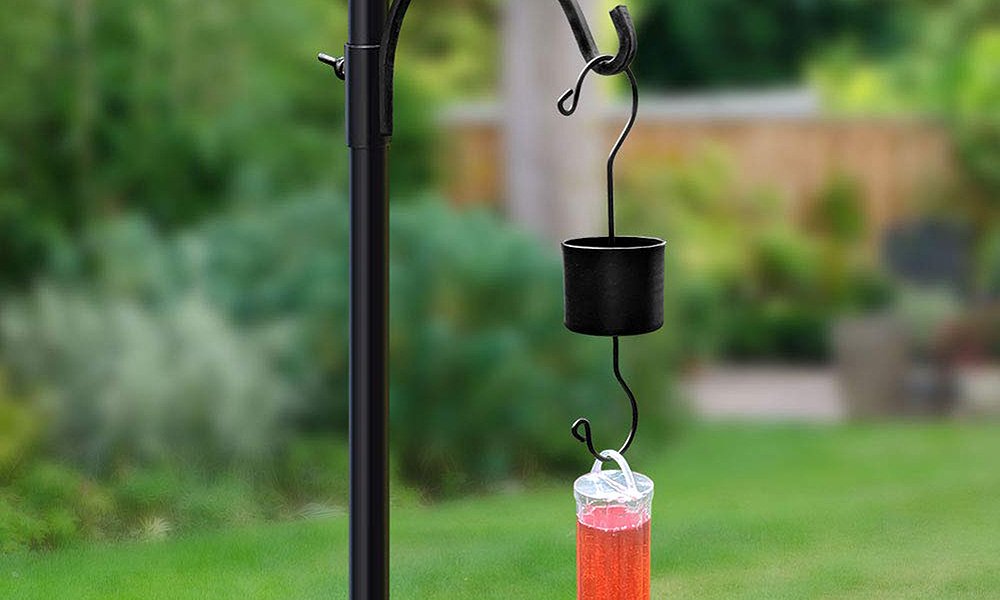
Add a simple ant moat to your feeder to keep them from clogging the holes. If your feeder doesn’t come with ant or bee guards, try rubbing a small amount of vegetable oil near the feeder holes to discourage insects.
But remember that native insects are good for the garden too. There’s no need to panic about a couple of bees. Your birds might even be attracted to the bug buffet!
Related: 12 Tips on How to Keep Ants OUT of Hummingbird Feeder
12. Plant the right bushes
Of course, the best way to attract orioles to your yard is to make it as enticing to them as possible by providing landscaping that is both beautiful and beneficial. Just like with choosing colorful flowers, planting fruit and berry-producing bushes such as mulberries, serviceberries, brambles, cherries, or figs can be a major draw for orioles. Orioles prefer dark-colored fruits, so bushes such as blueberries, blackberries, elderberries are also a plus.
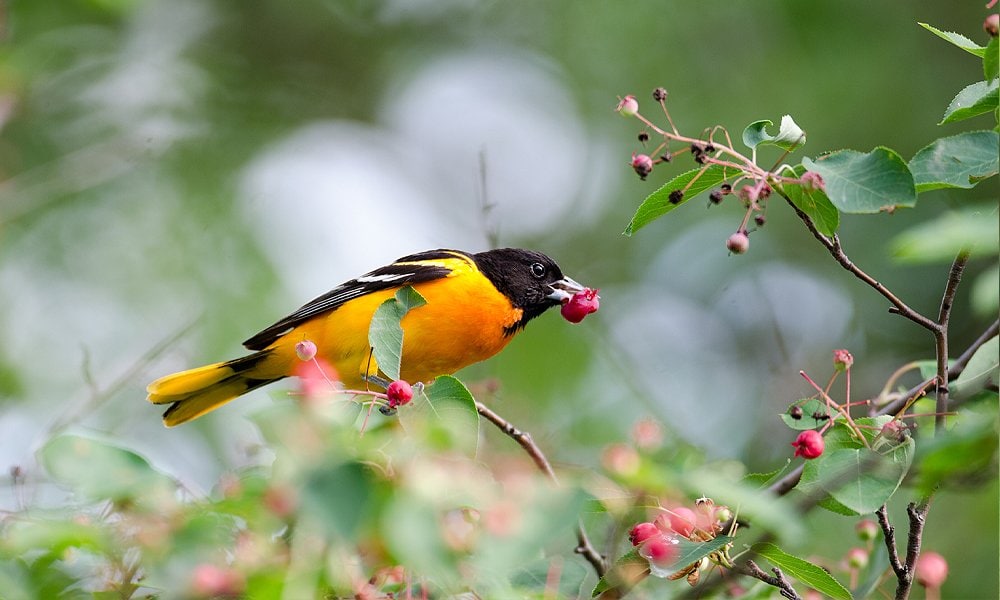
Orioles are also attracted to many of the same plants as hummingbirds. Bee balm, honeysuckle, cardinal flower, and mandevilla are favorites and will attract many other bird species to your yard as well. Fill your yard with native flowering plants, vines, shrubs, and trees to keep the orioles coming back year after year.
Final Thoughts
As spring ticks past, it can be frustrating to notice that your feeders have gone untouched. Don’t lose hope! Birds sometimes take a while to adapt to new objects. If you’re consistent and you keep your feeders out and stocked all spring, they’ll eventually start to generate some attention.
One step you can always take is to work on making your yard more friendly for all birds. Keep cats indoors if possible, limit the use of pesticides, and allow native plants to grow and you’ll find that your garden becomes a gathering place for songbirds in no time. I hope this guide has helped! Feel free to comment below with suggestions or thoughts!

